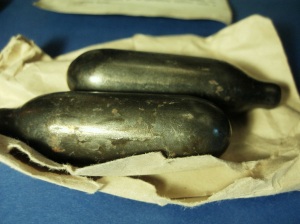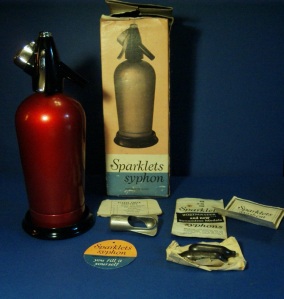They had a colour TV, a ‘studio couch’ (without arms- coarse brown plaid fabric), dynamic looking lightshades, a ‘hi-fi’ with seperate loudspeakers (we had a radiogram), an aquarium, a shaggy rug, ice cubes…
I took all of these things to be the hallmarks of sophistication, signs that these people had somehow escaped from the austerity in which my branch of the family seemed terminally stuck.
But of these trappings the one that I have the strongest memory is the soda siphon.

We collected the empty gas capsules though, and employed them in our Airfix armageddons as weapons of mass destruction, which we ominously called Doom Bombs or Blockbusters.









